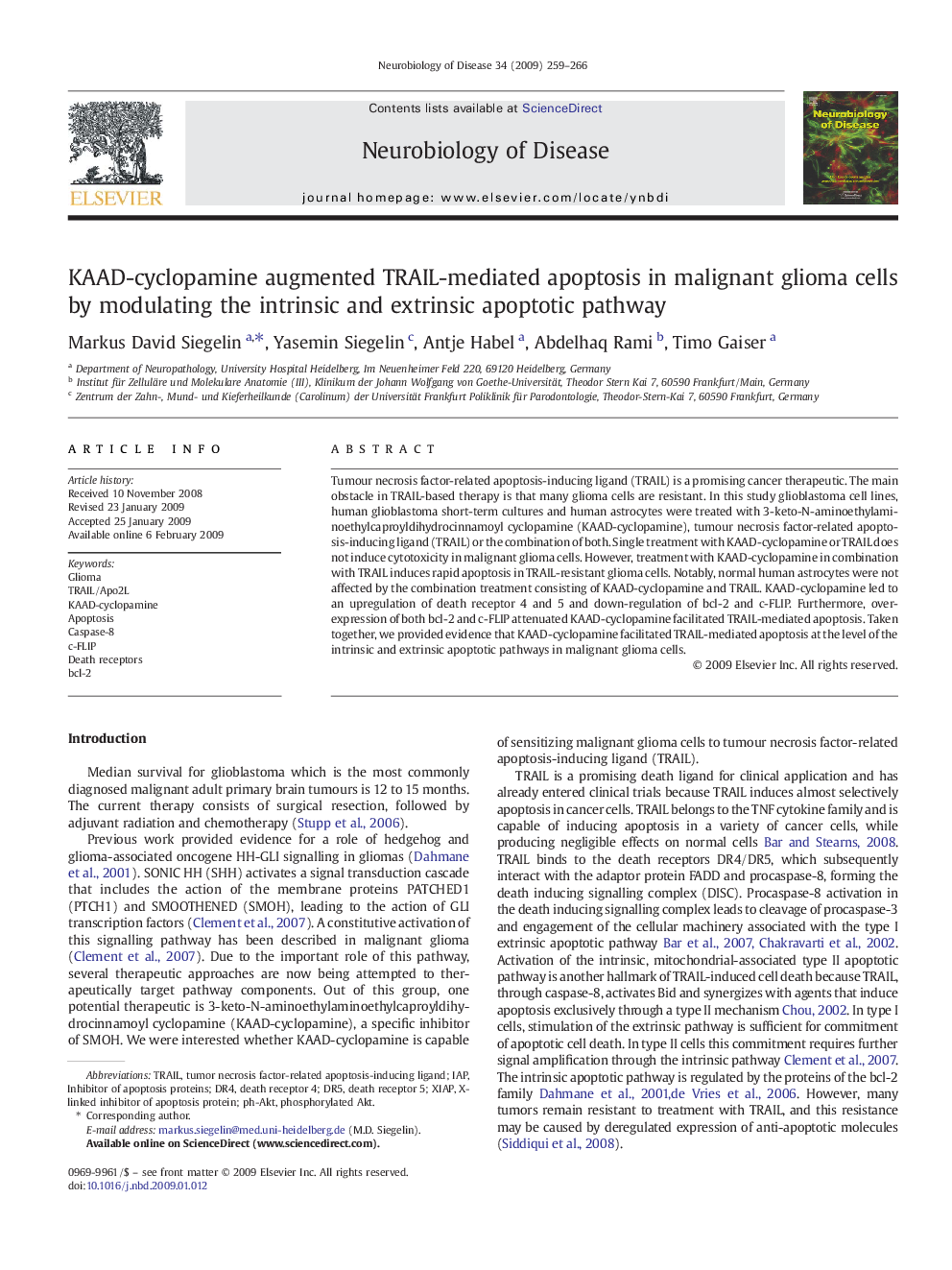| Article ID | Journal | Published Year | Pages | File Type |
|---|---|---|---|---|
| 3070085 | Neurobiology of Disease | 2009 | 8 Pages |
Abstract
Tumour necrosis factor-related apoptosis-inducing ligand (TRAIL) is a promising cancer therapeutic. The main obstacle in TRAIL-based therapy is that many glioma cells are resistant. In this study glioblastoma cell lines, human glioblastoma short-term cultures and human astrocytes were treated with 3-keto-N-aminoethylaminoethylcaproyldihydrocinnamoyl cyclopamine (KAAD-cyclopamine), tumour necrosis factor-related apoptosis-inducing ligand (TRAIL) or the combination of both. Single treatment with KAAD-cyclopamine or TRAIL does not induce cytotoxicity in malignant glioma cells. However, treatment with KAAD-cyclopamine in combination with TRAIL induces rapid apoptosis in TRAIL-resistant glioma cells. Notably, normal human astrocytes were not affected by the combination treatment consisting of KAAD-cyclopamine and TRAIL. KAAD-cyclopamine led to an upregulation of death receptor 4 and 5 and down-regulation of bcl-2 and c-FLIP. Furthermore, over-expression of both bcl-2 and c-FLIP attenuated KAAD-cyclopamine facilitated TRAIL-mediated apoptosis. Taken together, we provided evidence that KAAD-cyclopamine facilitated TRAIL-mediated apoptosis at the level of the intrinsic and extrinsic apoptotic pathways in malignant glioma cells.
Keywords
Related Topics
Life Sciences
Neuroscience
Neurology
Authors
Markus David Siegelin, Yasemin Siegelin, Antje Habel, Abdelhaq Rami, Timo Gaiser,
